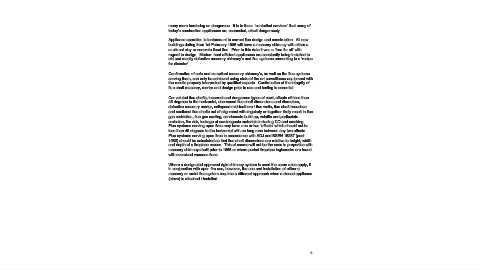Page 60 - Domestic Smoke Nuisance and Emissions Final_Neat
P. 60
many more bordering on dangerous. It is to these ‘controlled services’ that many of
today’s combustion appliances are connected, albeit dangerously.
Appliance operation is tantamount to correct flue design and construction. All new
buildings dating from 1st February 1966 will have a masonry chimney with either a
sectional clay or concrete lined flue. Prior to this date it was a ‘free for all’ with
regard to design. Modern heat efficient appliances are constantly being installed to
old and mostly defective masonry chimney’s and flue systems amounting to a ‘recipe
for disaster’
Confirmation of safe and compliant masonry chimney’s, as well as the flue systems
serving them, can only be achieved using state of the art surveillance equipment with
the results properly interpreted by qualified experts. Confirmation of the integrity of
flue shaft masonry, mortar and design prior to use and testing is essential.
Convoluted flue shafts, incorrect and dangerous types of cowl, offsets oft less than
45 degrees to the horizontal, decreased flue shaft dimensions and diameters,
defective masonry mortar, collapsed mid-feathers / flue walls, flue shaft breaches
and sectional flue shafts out of alignment will singularly or together likely result in flue
gas restriction, flue gas cooling, condensate build up, volatile and particulate
emission, fire risk, leakage of carcinogenic materials including CO and smoking.
Flue systems serving open fires may have one or two ‘offsets’ which should not be
less than 45 degrees to the horizontal with no long runs between any two offsets.
Flue systems serving open fires in accordance with ADJ and BSEN 15287 (post
1966) should be calculated so that flue shaft dimensions are relative to height, width
and depth of a fireplace recess. This of course will not be the case in properties with
masonry chimneys built prior to 1966 or where period fireplace inglenooks are found
with oversized vacuous flues.
Where a designated approved rigid chimney system is used the same rules apply, if
in conjunction with open fire use, however, the use and installation of either a
masonry or metal flue system requires a different approach when a closed appliance
(stove) is attached / installed.
8

